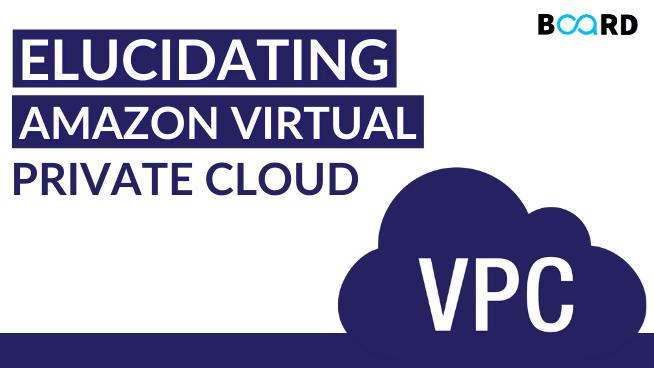Cloud Computing Fundamentals: Introduction and Core Principles
Elucidating Amazon Virtual Private Cloud

The virtual private cloud (VPC) is a type of Network-as-a-Service which allows users to create and access the infrastructure privately and securely.
To understand what a virtual private cloud is, let us consider one example, suppose you are traveling and after a long day you need a place to crash, but you have to make a choice, and the option you have is to buy an apartment which I know sounds totally absurd.
As you are tired and you have a bunch of luggage with you. So the option for buying a house is quite expensive, and it's a pretty big deal unless you are on Forbes's billionaire's list.
So you finally conclude about renting a hotel room for a day or two, which gives you similar facilities like buying a private house with loads of privacy and security.
In the Amazon web service, VPC is similar to renting a hotel room with tons of added benefits. The only thing which you need to pay is for the number of days you stayed. The privacy and security you'll be getting are similar to your private house.
Network-as-a-Service (NaaS)
Network-as-a-Service allows the tenant to access network infrastructure directly and securely. By making it possible to deploy the custom routing protocols.
It uses virtualized network infrastructure to provide network services to the user. It is the responsibility of the NaaS provider to maintain and manage the network resources but the user can also customize their network as per their use cases. Having a provider working for a customer decreases the workload of the customer. NaaS is also based on a pay-per-use model.
While using the NaaS each customer has independence and can segregate the network. The traffic of the organization or customer is logically isolated, and cost-cutting is also possible as there is no upfront amount added to building the infrastructure.
VPC is the service provided by Amazon, which helps user to set up their own private network in the public cloud world.
Benefits of using Amazon Virtual Private Cloud
1. Customizable Virtual Network
Amazon VPC helps customers to control the virtual network environment or infrastructure.
It lets users choose their own IP Address range, and subnets, and configure route tables to any available gateways.
Anyone can customize the network configuration by creating a public-facing subnet for their hosted web servers which has access to the public internet. Users can also place their backend systems, such as databases or application servers, in a private-facing subnet. With Amazon VPC, Users can ensure that their virtual private cloud is configured to fit their specific business needs.
2. Secure Connection
Amazon VPC gives advanced security features to the users that allow them to perform inbound and outbound filtering at the instance and subnet levels.
Additionally, a tenant can store data in Amazon S3 and restrict access. So, it's only accessible from instances inside VPC. Amazon VPC also has monitoring features that let the user perform functions like out-of-band monitoring and inline traffic inspection, which help them screen and secure traffic on their virtual infrastructure.
3. Hassle-free set-up
Building a network infrastructure is quite burdensome but with the help of an AWS management console or command-line interface, anyone can set up the vpc easily and quickly.
VPC automatically creates the subnets, IP ranges, route tables, and security groups as per tenant needs and use cases.
When to use VPC
1. Hosting a Public-Facing Website
While hosting a website or blog site, security is one of the major concerns, but when a user uses the custom VPC they gain additional layers of privacy and security.
Using custom VPC can help secure the website by creating security group rules (firewall) that allow the webserver to respond to inbound HTTP and SSL requests from the internet. Also simultaneously prohibits the webserver from initiating outbound connections to the internet.
2. Multi-tier Web Applications
Using the VPC customer can launch webservers in a publicly accessible subnet while running their application servers and databases in private subnets.
This will ensure that application servers and databases cannot be directly accessed from the internet as all the crucial data are dumped.
The tenant can control access between the web servers and subnets using inbound and outbound packet filtering provided by network access control lists and security groups(firewall).
Conclusion
When it comes to network infrastructure. AWS VPC is one of the best services as it offers a lot of flexibility and freedom to the user.
All the popular services like EC2 and S3 can be integrated and used inside, the custom VPC having private or public subnet.
Users can automatically provision AWS resources in a ready-to-use default VPC. They can configure this VPC by adding or removing subnets, attaching network gateways, changing the default route table, and modifying the network ACLs.
To learn more about the core concepts of the Amazon web service and to gain in-depth knowledge of all the topics covered in the actual exam of AWS Solution Architect Associate (SAA-C02).
Enroll in the AWS Solution Architect Training Certification Course and learn directly from AWS Industry Experts & Get certified.
